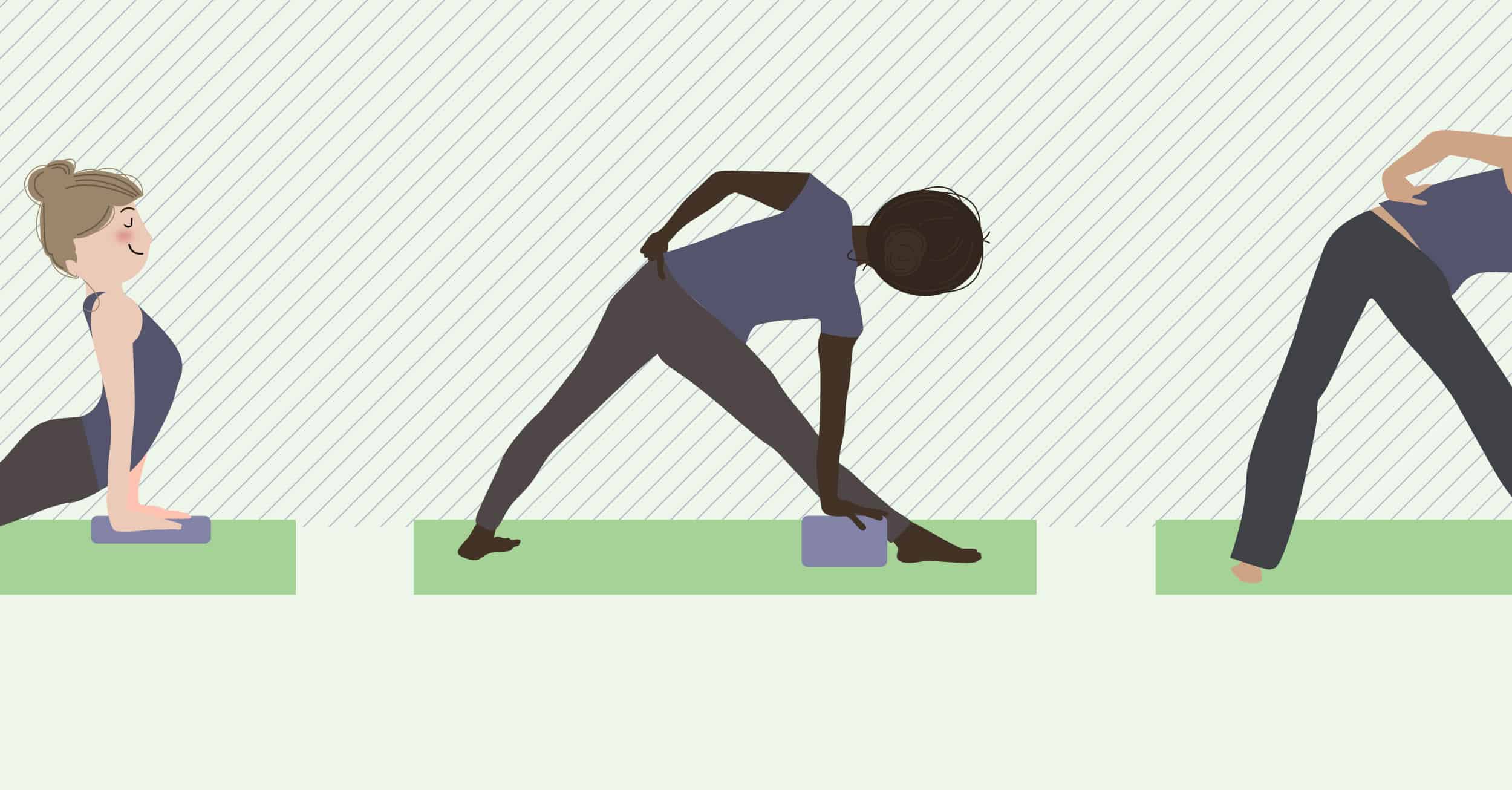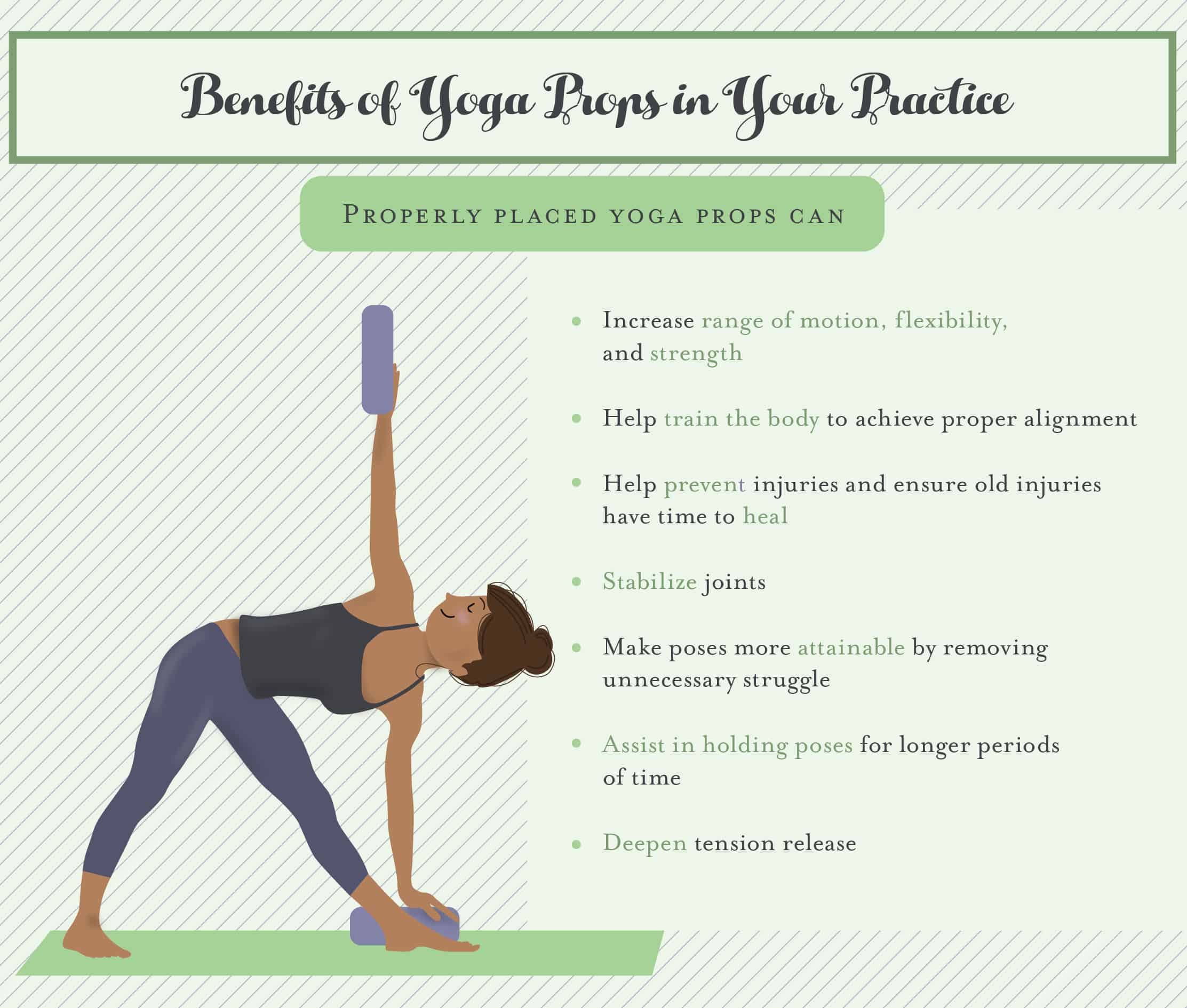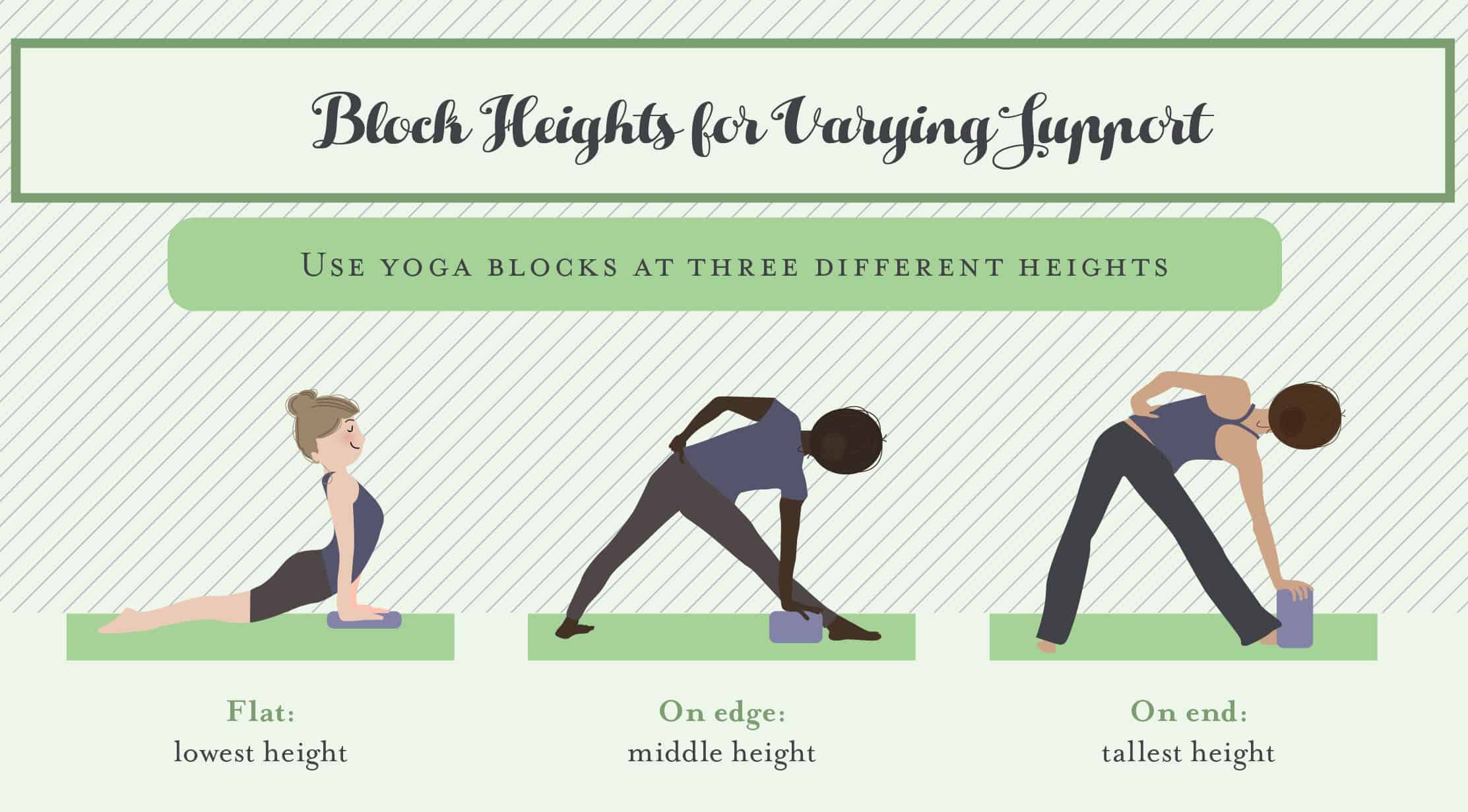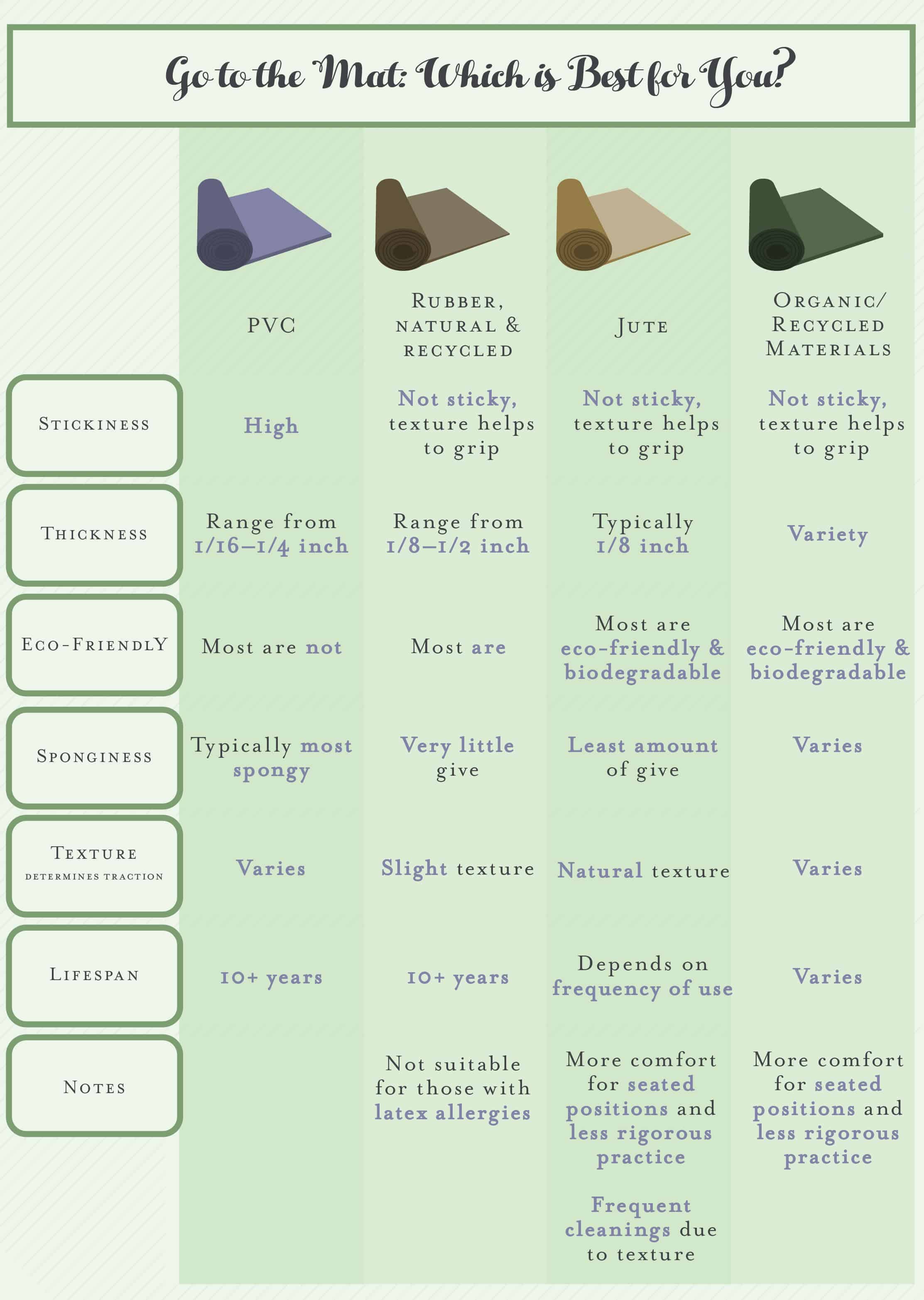Whether you struggle to straighten those legs in triangle pose or teeter while trying to touch the ground in standing split, getting to a place of “om” when you feel unstable in your yoga practice is hard. Luckily, a plethora of yoga props help bring balance and stability to any yogi’s practice, whether you’re a true beginner or a seasoned professional.
The purpose of props is to help practitioners modify yoga postures, or asanas, to better fit their needs and abilities. A prop can be any object that assists with stretching, strengthening, balance, relaxation, or alignment. Using a prop—from blocks and straps to the mat itself—in the proper manner can improve yoga practice in a number of ways.
 The Props
The Props
Props come in a wide range of forms with many uses. Here are some of the most popular options and how to use them.
Blocks
Blocks are primarily used for support by bringing the floor closer to you. The support of a block can help practitioners lengthen and extend to deepen and soften poses. Blocks are lightweight, affordable, and easy to find at any major retailer.
How to use: Depending on the pose and level of support needed, blocks can be placed in three positions: flat (lowest height), on edge (middle height), or on end (tallest height). Flat offers the most stability, while on end offers the least. Make sure to grip the block slightly for increased stability.
How to choose: The standard block size is 4 by 6 by 9 inches, but you may also find blocks with half this thickness. Blocks are most commonly made of foam and cork, but solid wood blocks are also popular. Cork blocks offer the best combination of stability and comfort. If you want to invest in a higher quality product, consider checking out the Bhoga Infinity Block. This eco-friendly and ergonomic hard wood block offers all the same benefits of a traditional block, while also offering improved grip thanks to it’s open sides and increased support in restorative poses with a natural curved shape.
Poses to try: Blocks help to reach the floor in poses such as triangle, pyramid, extended side angle, and half moon. Blocks can also help support the hips in hero pose, pigeon, and supported bridge pose.
How to clean: For foam and wood blocks, gently wipe clean with a damp cloth and a drop of dish soap. Set out to air dry. For cork blocks, wipe clean with water, or use a gentle, organic cleanser to wash off any stubborn stains.
 Mats
Mats
A good mat is the base to any yoga practice—literally. There are a few key elements to consider when selecting the perfect mat: material, texture, thickness, and stickiness. Most standard mats are made of PVC (aka vinyl), but there are plenty of other more eco-friendly mat options such as those made from jute or organic and recycled materials including rubber and cotton. The material determines the texture, stickiness, and sponginess (or how much it gives to pressure) of the mat.
How to use: Roll out flat and practice on top.
How to choose: Yoga mats can range in price from $15 to $100 or more. Basic varieties are easy to find at any major retailer, but higher quality versions are typically available at specialty sports stores or online. If yoga is going to be a daily or weekly routine, invest in a high quality, durable mat. Unless you have special requirements, a mat made from PVC with the standard 1/8-inch thickness should work for most practitioners. They are usually slightly sticky, which helps with grip during practice, no matter how sweaty, and they last at least a decade or more. Feeling fancy? All sorts of unique yoga mats exist, from ones that self-roll to others with numbered sections to assist in alignment.
Poses to try: All of them! A good mat can be especially helpful in balance poses, or in any pose where the knees come into contact with the floor and need some cushion.
How to clean: Many manufacturers have specific instructions on how to clean their mats, so always check their website for instructions before proceeding. For most mats, a yoga mat cleaner does the trick. Or gently wipe down most mats with a combination of water and a drop of mild soap. Always lay flat and allow to dry completely.
 Yoga Wheel
Yoga Wheel
Also called the Dharma Yoga Wheel, this relatively new prop is the creation of Sri Dharma Mittra, founder of Dharma Mittra Yoga. It’s intended to improve flexibility, namely in the back . Using a yoga wheel can help make backbends more accessible and comfortable for beginners or advanced yogis. In addition to assisting with back bends, using a yoga wheel can help open the front of the body, including the chest and shoulders, abs, hip flexors, and quads. It can enhance balance as well.
How to use: There are some great instructional videos online to learn how to incorporate the wheel into any practice. Generally, the wheel is placed along the curvature of the spine to provide support in back-bending poses.
How to choose: While the Dharma Yoga Wheel is probably the best known model, there are other available options. Most variations come in either PVC or wood and in a few different sizes based on the height of the user. Wheels typically sell for around $100.
Poses to try: Check out instructional videos online to learn how to incorporate the wheel into any practice. Some poses you may see are monkey pose, pigeon pose, or supported shoulder stand.
How to clean: Wipe clean with warm water or water and a bit of mild soap. Lay out to dry.
Strap or Belt
The yoga strap or belt is great for increasing muscle flexibility and length, especially in poses that involve reaching the toes or binding the arms. In addition, the use of a strap can help support or stabilize many positions.
How to use: Straps act as an extension of the arms or hands. For example, in seated forward fold, a strap placed around the balls of the feet can help deepen the pose for someone who can’t reach their toes on their own. Straps can also increase balance and strength, for example when used to provide a support structure to the upper arms in forearm stand.
How to choose: Straps come in many sizes, but a 10-foot strap is a good middle-of-the-road choice. The length is enough that you will never run out, but not too long to manage. Look for a strap or belt with a D-ring locking system, which is the easiest type to adjust.
Poses to try: First, try using the strap as an extension of the hands in seated forward fold (when the hands cannot easily reach the feet), or reclined hand-to-big-toe pose. Loop the middle of the strap across the ball of the foot (or feet) and grab on to the strap on each side, using the strap for traction to lengthen the body and deepen the fold. Next, try using the strap for assistance with standing extended hand-to-big-toe pose (where you stand with one leg extended straight in front and then out to one side). If you want to incorporate binds to your practice but aren’t quite there, use a strap as the connection between your hands.
How to clean: Most straps are made from cotton and are machine washable. Air dry to prevent shrinking.
Blanket
Blankets can provide comfort and support in a number of poses, from basic half lotus to something more advanced such as a headstand.
How to use: Depending on how many times it has been folded, a blanket can offer a range of support—it’s really up to the practitioner to fold the blanket in a way that helps them the best.
How to choose: Yoga blankets are typically thick and made of wool. Some major online retailers may carry yoga blankets, but you can also purchase them directly from many yoga or fitness-focused brands.
Poses to try: A blanket offers support for sensitive knees in poses like camel or crescent. It is also supports the hips in poses such as child’s pose (when place in the fold of the knees), pigeon (to support the hip of the forward leg), or lotus (to raise the hips, allowing for the knees to more easily come to the floor).
How to clean: Specific instructions may vary by brand, so check with the manufacturer before proceeding. Most yoga blankets can be washed on a gentle cycle with cold water and a mild detergent. Hang or lay flat to dry.
Yoga Towel
If your hands or feet slip on the mat, a yoga towel could solve the problem. A yoga towel may be especially helpful in sweatier practices such as vinyasa or power yoga.
How to use: Lay flat over a yoga mat for increased traction and decreased slippage.
How to choose: Yoga towels are generally very lightweight and fit on almost any mat. For extra long mats (recommended for practitioners six feet tall or more), look for a towel with a length to match. Towels vary in texture—some have raised bumps for increased traction while others are completely smooth. The choice is up to personal preference.
Poses to try: All of them! But the towel will especially improve poses where the hands tend to slip, such as downward dog.
How to clean: Most yoga towels are machine washable. Wash in cold water to prevent shrinking.
Bolster
Bolsters are typically used in restorative or prenatal yoga classes to provide comfort and support when poses are held for a longer period of time. These firm pillows help practitioners soften into poses and relax enough to really stretch and deepen the practice.
How to use: Bolsters are typically used in seated postures to bring the ground closer to the body and add support.
How to choose: Bolsters come in many shapes and sizes, but a standard “flat” bolster is about 8 by 26 by 32.5 inches and weighs about 5 pounds. There are also smaller or larger bolsters, as well as different shapes including round and ovular. Start with a standard-size bolster and add folded blankets if you need more support.
Poses to try: The most basic pose to begin with the bolster is supported child’s pose (kneel and place the bolster flat, lengthwise between the knees, and lay down so that the bolster supports your torso and head). Another good pose to try out with the bolster is supported back bend, which will help to open the chest. You may also use the bolster for elevated legs up the wall pose, or for added support in savasana.
How to clean: Most bolsters come with a cover that can easily be unzipped and removed. Once removed, wash the cover in cold water on gentle and tumble dry low on a cool setting, or hang to dry.
Wearable Accessories
There are all kinds of wearable yoga accessories, from the clothes themselves to socks, gloves, and sleeves. These are all great items—especially if you tend to have slippery hands, arms, or feet—but none of them are really necessary to improve your practice. All you really need for an at-home or studio yoga class is clothes that don’t restrict your movement and a mat for practice.
Conclusion
No matter the props you use, the most important thing to remember is that they are all there to make yoga more accessible to each individual practitioner. And they are all optional. Play around with different props to find which ones most benefit your specific practice.





